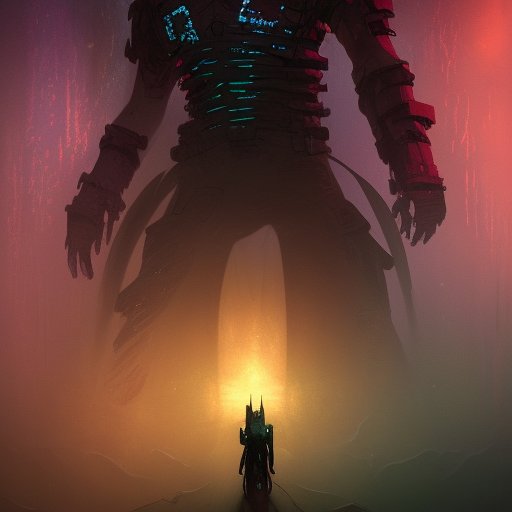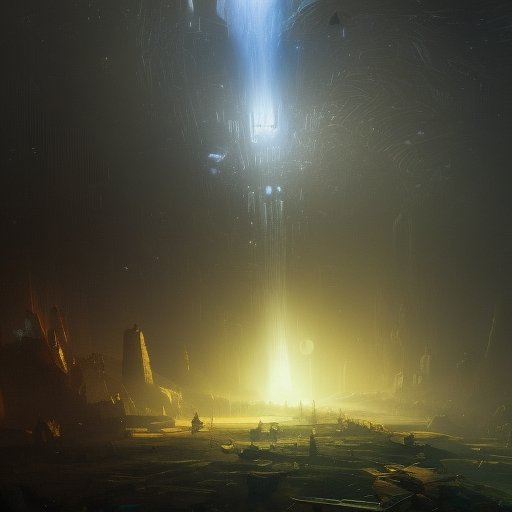
Space exploration has always been a risky business, and with great risk comes great sacrifice. One of the most overlooked aspects of space travel is the fate of the astronauts who don’t make it back home. The dead in space, a topic that’s often avoided, is one that must be addressed. In this article, we explore the options for space burials and the possibility of space resurrection. We also take a look at the ethics of leaving our dead in space and the impact it has on the future of space exploration. Join us as we boldly go where no one has gone before, even in death.
I. Introduction
Buckle up, space cadets! It’s time to talk about a subject that isn’t often discussed in polite company: death in space. It’s a topic that many of us would prefer to avoid because it’s a little too close to home, even for space travelers like us. But the truth is, death can happen to anyone, and that includes those of us who venture beyond the safety of Earth’s atmosphere.

So, what happens when an astronaut dies in space? Is there some cosmic graveyard where they’re all laid to rest? Or do we just leave them floating aimlessly through the void for all eternity? It’s a morbid subject, to be sure, but it’s one that raises some interesting questions about the meaning of life (and death) in a universe that we’re only just beginning to understand.
Of course, death in space isn’t just a hypothetical concern; it’s a very real possibility that every astronaut faces when they suit up and launch themselves into the void. Even the most advanced technology can’t protect us from every danger that lurks beyond our planet’s atmosphere. Whether it’s a catastrophic equipment malfunction, a collision with space debris, or simply old age catching up with us, death is always lurking just around the corner.
So let’s take a closer look at what happens when an astronaut dies in space. Do they just float off into infinity, a sad and lonely reminder of our human frailty? Or do we have some way of honoring their memory and giving them a final resting place among the stars? We’ll delve into these questions (and more) in the rest of this article. So strap in, keep your hands and feet inside the spacecraft at all times, and let’s venture into the great unknown together!
II. The Great Beyond
When an astronaut takes their final breath in space, their body doesn’t just disappear into the vast expanse of the Universe. In fact, there are a few different places that a dead astronaut might end up, depending on the circumstances of their death and the wishes of their loved ones back home.

One possibility is that the body is returned to Earth, either via a resupply mission or a specialized recovery mission. This is the most common option, as it allows for a traditional funeral and burial back home. Of course, bringing a body back to Earth isn’t always feasible or practical. Depending on the location and circumstances of a death, it might be impossible to retrieve the body without endangering other crew members or compromising the mission.
In those cases, the body might be jettisoned into space, either attached to the spacecraft or floating free. This is a solemn way to say goodbye to a fallen comrade, and it’s been done on several occasions throughout the history of space exploration. Some crews have even carried out elaborate ceremonies to honor their fallen colleagues, such as reading poems or playing music.
But what if we want to give our dead astronauts a more permanent resting place in space? It’s an intriguing idea, and one that’s been discussed by scientists and science fiction writers alike. Some have proposed creating a dedicated space cemetery, where the remains of astronauts and other space travelers could be interred. Others have suggested using the Moon or other celestial bodies as burial sites.
Of course, these ideas are still in the realm of science fiction. There are many logistical and ethical challenges that would need to be overcome before we can establish a space graveyard. But even if we never create a physical resting place for our fallen astronauts, their memories will live on in the annals of space history. Whether they’re buried on Earth or drifting off into the void, they’ll always be remembered as pioneers and heroes, charting a course for humanity to follow.
III. Tombstones in the Void
When we lose someone dear to us, it’s natural to want some way to remember them, to honor the memory of their life and everything they accomplished. And when it comes to fallen space heroes, the challenge of creating a fitting memorial can be even greater.

One solution that’s been proposed is the creation of a space cemetery: a special location in orbit where the remains of our fallen astronauts can be laid to rest. The concept is still in its infancy, but some companies are already exploring the possibility of building a private cemetery for space tourists and other paying customers.
Of course, creating a space cemetery is no easy task. There are a number of regulatory hurdles that need to be overcome, not to mention the technical and financial challenges of actually building the necessary infrastructure. And then there’s the question of what form such a memorial should take; should it be a simple plaque or marker, a more elaborate statue or monument, or something even more ambitiously creative?
Another option that’s been discussed is the idea of sending the remains of our fallen astronauts on a “deep space mission” of their own. This would involve launching the cremated remains (or other elements) of the deceased astronaut out of our solar system entirely, carrying their memory into the great beyond. Some have even proposed that we launch such missions in honor of all astronauts who have died in the line of duty, creating a symbolic gesture that unites all of humanity in our ongoing mission to explore the universe.
Whether we build a physical monument or launch our dead into the cosmos, one thing is clear: we must find some way to honor the memory of our fallen space heroes. These brave men and women risk their lives to push the boundaries of what we know and what we’re capable of, and we owe it to them to create a lasting tribute that reflects the magnitude of their sacrifice. So while we may never fully understand the mysteries of space, we can at least take comfort in knowing that our heroes will be remembered for all time.
IV. The Perils of Space Burials
Now, we’ve talked about what happens when an astronaut dies in space, but what about when they’re left there on purpose? Space burials have been a subject of fascination for decades, but the reality of leaving our dead orbiting the Earth (or any other celestial body) is a complicated one.

First of all, there’s the issue of potential contamination. If we’re talking about a regular human corpse, it’s unlikely that there would be any serious impact on the space environment. However, if the deceased had been exposed to any hazardous chemicals or diseases, we could be introducing new dangers into space that we’re not equipped to deal with. And that’s not even taking into account the possibility of alien lifeforms being affected by our biological material.
Another concern is the possibility of collision. As we’ve seen with the increasing amount of space debris orbiting our planet, even the tiniest piece of junk can cause serious damage to a spacecraft. If we start leaving human remains in orbit, we’re essentially adding more obstacles to an already congested space highway.
Then there’s the ethical dilemma. As a society, we tend to place a lot of importance on honoring the dead and showing them respect after they’ve passed on. Leaving a body to float endlessly through space could be seen as dishonorable or even disrespectful, especially to the families of the deceased. On the other hand, we have to consider the financial and logistical challenges of bringing every astronaut’s body back to Earth for burial.
Finally, there’s the question of space law. While international treaties exist to govern activities in space, there currently aren’t any specific laws regarding space burials. This means that different countries (and private companies) could have wildly different policies on how to deal with space corpses. It’s a legal gray area that will need to be addressed as space travel becomes more and more commonplace.
Ultimately, the question of what happens when we leave our dead in orbit is a complex one with no easy answers. We’ll have to carefully consider the potential risks and ethical concerns before deciding on a policy that’s respectful to the dead, safe for the living, and sustainable for the future of space exploration.
V. The Undead Among Us
Hold on to your space helmets, folks; we’re about to delve into some truly mind-bending territory. You see, there are some scientists out there who believe that it may be possible to bring dead astronauts back to life. Yes, you heard that right: resurrecting the dead. It may sound like something out of a science fiction novel, but some researchers are dead serious about it.

So how exactly would we go about resurrecting someone who’s already shuffled off this mortal coil? Well, the truth is that we’re not entirely sure yet. There are some theories out there, of course – everything from cryonics to uploading human consciousness into a computer – but none of it is exactly mainstream science at this point.
One of the biggest challenges in resurrecting the dead, of course, is how to restore brain function. After all, the brain is the control center of the body; without it, we’re not much use to anyone. And as anyone who’s ever binged on zombie movies knows, bringing someone back from the dead doesn’t necessarily mean that their brain is going to be in perfect working order.
One theory that’s been proposed to circumvent this issue is the idea of uploading a person’s brain into a computer. Essentially, the theory goes, we would scan and map a deceased person’s brain (with all its memories, knowledge, and personality intact), and then upload that data into a computer. At that point, the computer simulation would essentially be a digital version of the person, complete with their thoughts, emotions, and memories.
Of course, this is all still very much in the realm of science fiction at this point. We’re a long way from being able to upload human consciousness into a computer, and even further from being able to resurrect dead astronauts (or anyone else, for that matter). But it’s an intriguing area of research nonetheless, and one that raises some profound questions about the nature of life, death, and what it means to truly be alive. So let’s keep our eyes on the stars, and maybe, just maybe, we’ll unlock the secrets of the universe together.
VI. A Grave Situation
It’s a tough question to answer: what do we do with the bodies of dead astronauts in space? It’s a dilemma that’s been discussed by astronauts, scientists, and even philosophers since the dawn of the space age. On the one hand, it seems only right that we should honor the memories of those who sacrificed their lives exploring the great unknown. But on the other hand, there are practical considerations that can’t be ignored.

One of the biggest challenges of dealing with dead bodies in space is simply the logistics involved. It’s not like we can just bury our dead under a pile of dirt and call it a day. Spacecraft have limited resources, and carrying around a dead body (or several) can be a huge drain on those resources. There’s also the problem of how to store the body in a way that’s respectful and safe for the remaining crew members.
But there are also ethical considerations to take into account. Is it really right to simply jettison a dead astronaut’s body out into the great unknown, where it could float for eternity and become a haunting reminder of our own mistakes and shortcomings? Or is there a better way to honor their memory and give them a proper final resting place, even if that place is millions of miles away from home?
These are tough questions that don’t have easy answers. Ultimately, the decision of what to do with the bodies of dead astronauts falls to the individual space agencies and the families of the deceased. It’s a deeply personal decision that must take into account a variety of factors, from the practical considerations of resources and logistics to the ethical considerations of memory and honor.
But whatever the decision may be, one thing is certain: the legacy of those who have given their lives exploring the final frontier will live on. They will always be remembered and honored, whether through a simple plaque or monument or by venturing out into the vast expanse of space to find a new home among the stars.
VII. Rest in Peace, Spock
As much as we’d like to think that space exploration is just a bunch of number-crunching scientists and engineers in lab coats, the truth is that it’s been fueled by our dreams of adventure and discovery. And a big part of that adventure has been the fictional space characters who have captured our imaginations throughout the years.

From Spock to Luke Skywalker, from Ellen Ripley to Jean-Luc Picard, we’ve seen some truly unforgettable characters blast off into the cosmos and do battle with alien menaces, terraform new worlds, and boldly go where no one has gone before. And while they may be fictional, their impact on our own aspirations and ambitions for space exploration cannot be denied.
Spock, in particular, has become an emblem of the human struggles and questions that we face when we leave our own planet behind. His stoic logic and intellect were tempered by his very human emotions and cultural background, making him a complex and fascinating character that we’ve all grown to love.
But what about the other fictional characters who have ventured into the final frontier? What can they teach us about the challenges and opportunities that await us in the cosmos? And how have they shaped our collective understanding and appreciation of what it means to be an astronaut or a space explorer?
It’s worth taking a moment to reflect on the enduring legacy of these characters, and the powerful impact that they have had on our own perceptions of space and the human experience. After all, they represent the best of what we hope to achieve as a species, and their stories remind us of the infinite potential that lies within us all.
So let’s raise a glass (or a photon torpedo, if you prefer) to these fictional space icons, and let’s honor their memory by continuing to dream big and reach for the stars. Live long and prosper, Spock, and thanks for the memories.
VIII. Conclusion
And so we come to the end of our journey through the grave of dead space, dear readers. It’s been quite a trip, but I think we’ve learned a lot about the fascinating and often unsettling subject of death in space.

We’ve explored the many different ways that we might memorialize our fallen astronauts, from planting flags on distant planets to launching their ashes into the void. We’ve pondered the possibility of resurrecting our space heroes and bringing them back from the dead. And we’ve considered the ethical implications of leaving our dead in space, asking whether it’s right to use the final frontier as a cosmic graveyard.
Through it all, we’ve kept our sense of humor and our sense of wonder. After all, the universe may be vast, cold, and cruel, but that doesn’t mean we can’t find meaning and purpose in our explorations of it. As long as we keep pushing the boundaries of what’s possible, boldly going where no one has gone before, we’ll continue to make progress and achieve great things.
There will always be risks involved in space exploration, and death will always be an ever-present companion. But if there’s one thing that our journey through the grave of dead space has taught us, it’s that even in death, there’s something beautiful and inspiring about the human spirit. So let’s keep pressing forward, keep exploring, keep learning, and keep honoring those who came before us. We may not know what the future holds, but one thing is certain: we’ll face it head on, with courage, curiosity, and a sense of adventure that never fades.






